Weaving complex visual narratives dotted with conspiracy, double-dealings, intrigue, and subterfuge, Deb Sokolow creates a multilayered universe that draws inspiration from real life events, personalities, and imaginary scenarios. The COMP Magazine caught up with Sokolow at her westside studio to discuss her fascination with Chicago’s murky past, the impact text hierarchies have upon subjectivity, the role of humor and play in her efforts, and the importance of research.
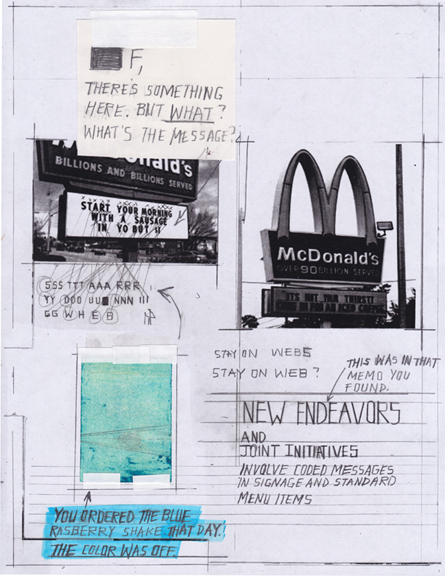
Deb Sokolow
New Endeavors and Joint Initiatives
toner, highlighter, graphite, collage on paper
11 x 8 1/2 inches
2015
Can we perhaps start with you sharing with us a little background? Are there any specific event(s) or item(s) that may have initiated your aesthetic interest and practice?
There were a number of events in my youth that served as inspiration and subject matter for my art practice. The main event occurred in 1986. This was when I first encountered the vast universe of espionage and intrigue while witnessing a highly suspicious briefcase exchange in the bathroom of a Washington, D.C. McDonald’s. A few years later, I worked as a congressional intern on Capitol Hill, and a few years after this, I discovered my Cousin Irving Sokolow’s real-life connection to Lee Harvey Oswald and the Warren Commission’s attempts to verbally coerce Irving into stating that Oswald acted alone. On these occasions, I felt certain I was catching a glimpse into some sort of sinister parallel world, or so I imagined. A significant amount of spy novels read in those years also helped form my understanding as to how individuals and entities, nefarious and otherwise, might operate beneath the surface of things.
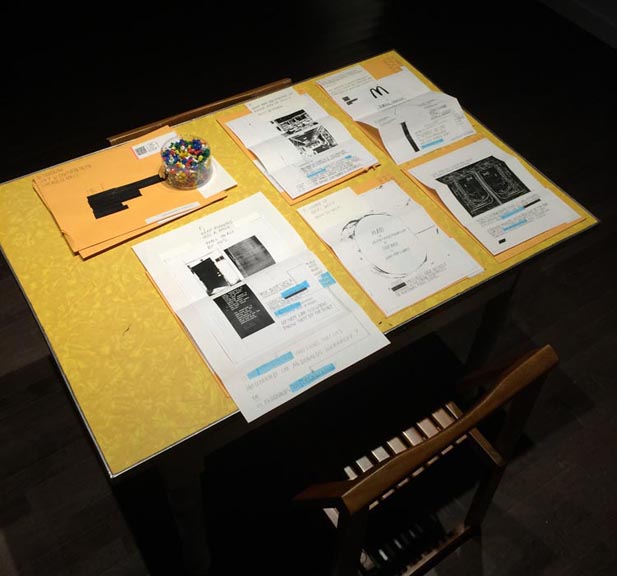
Deb Sokolow
Mr. F
toner on paper, graphite on note cards, highlighter, ink on envelopes
dimensions variable
2015
Installation image from the project, Mr. F, at the ski club, Milwaukee, 2015
You appear to hold a fascination for “loaded” content. E-mail scams, drug lords, ghosts, Chicago Mob, to name a few, are a sampling of topics I have encountered when looking at your work. What attracts you to this type of subject matter?
I am incredibly fascinated, but maybe also a little bit horrified, with what could be occurring just out of sight. Shadowy histories, manipulative individuals of influence, organizational brainwashing, all of it holds my attention. What are the circumstances under which an individual would join a cult, run a dirty political campaign, control the lives of others or haunt an old building? And the sources reporting on these individuals, news stories, histories and conspiracy theories- I’m interested in the sources, too. Are they reliable, do they have hidden agendas, and do they freely mix fact with fiction? As viewers and readers, how can we tell the difference or does it even matter?
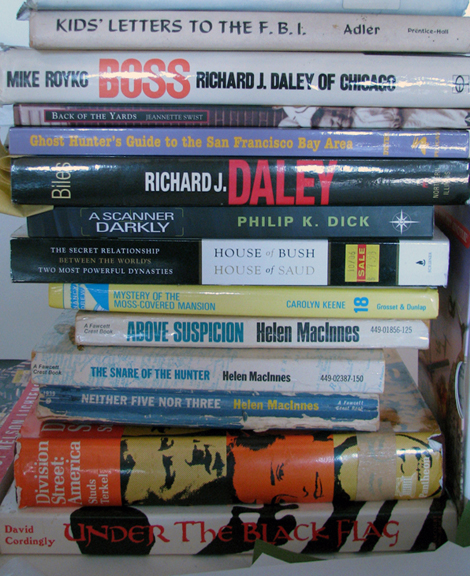
Deb Sokolow
books for research
2015
On one level, your work weaves materials that couple known personalities and events with imaginary scenarios (e.g., Mayor Daley + Pirates). Beyond being playful, what is your intent in intersecting these seemingly disparate subjects?
I am interested in creating something new. Yes, the politicians, actors or drug lords I research and write about do exist, but what happens when they encounter something new, or experience life in an alternate trajectory? Always, I’m looking for humor, but I am also interested in these individuals and what makes them tick. Is a manipulative individual always a manipulative individual, even if an alternate life track hands this individual a different set of cards?
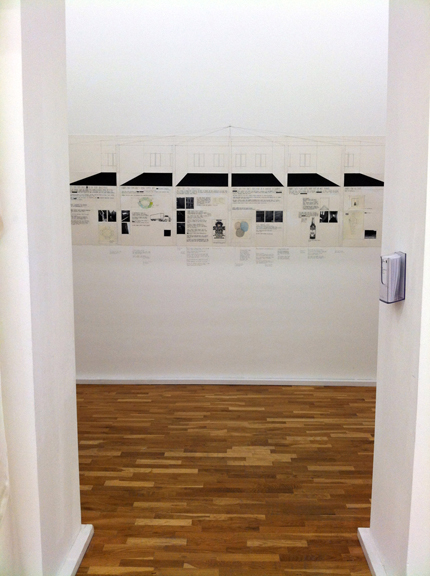
Deb Sokolow
You tell people you’re working really hard on things these days, part 2
graphite, acrylic, photo collage, tape on paper, graphite on gallery wall
33 x 102 inches
2013
Installation image from Museum für Gegenwartskunst Siegen, Germany, 2013
traveled to Contemporary Art Museum, St. Louis, 2015
What role does process play in these investigations? Are you mapping out the idea as you develop your materials? Can you offer insight into the tactile side of your practice?
I spend a lot of time researching and writing about certain topics. My best brainstorming sessions come when I’m doing the dishes. It’s a good thing I don’t have a dishwasher; I’d never be able to come up with new ideas. I also walk almost everywhere and read and listen to the news everyday. These daily rituals also lead to helpful brainstorming sessions and ideas for future projects. In the past, I would wait to work on the visuals until after the research and writing, but lately the visuals are happening before and independently of the research. Eventually the writing and the visuals will come together, and the visuals might even end up changing the shape or tone of the writing.
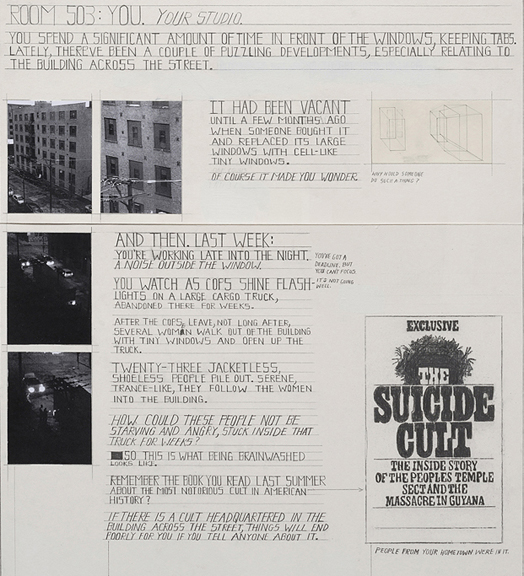
Deb Sokolow
detail
You tell people you’re working really hard on things these days, part 2
graphite, acrylic, photo collage, tape on paper, graphite on gallery wall
33 x 102 inches
2013
Text plays a substantial role in your drawings and installations. Beyond establishing narrative elements, what other role do you hope the text plays in your work?
The physical act- a writer’s practice- of writing, editing, erasing and reworking becomes a type of drawing process for me. These revisions, noticeable on the surface of the paper or panel, also speak to the self-doubt of my narrator who tells each story or episode. And varying text sizes represent different levels of subjectivity voiced within the storytelling.
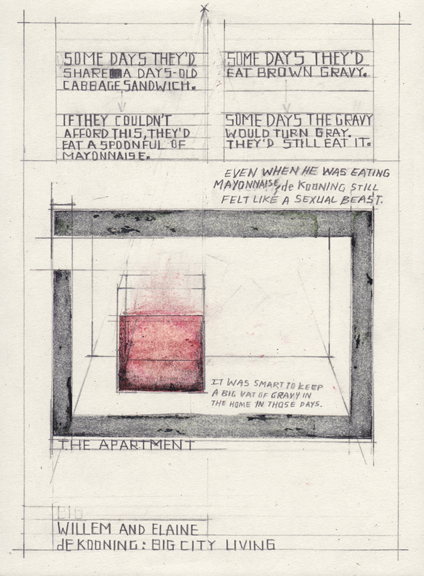
Deb Sokolow
Willem and Elaine de Kooning: Big City Living
graphite, crayon, colored pencil, collage on paper
8 x 6 inches
2014
You are currently developing a book that will be presented by Western Exhibitions at the Editions/Artist’s Book Fair in NYC (11/5 – 11/8). Can you share with us an introduction to the intent and process for this project?
For the EAB Fair, I just finished the new book, Inside the Famous Architect’s Compound, which contains blueprint-like floor plans and captions, hand-rendered across several accordion-folded pages, and depicts the home base of the Famous Architect, a fictitious character based on Frank Lloyd Wright. This past summer, I toured Wright’s Taliesin estate near Spring Green, Wisconsin and researched Wright’s architectural apprenticeship program, which was modeled after the cult that his third wife had belonged to. While the contents of the book are based on Wright’s estate and his apprenticeship program in which aspiring architecture students paid Wright “tuition” to work as his servants, the Famous Architect is a stand-in for pretty much any artistic alpha male genius who suffers from delusions of grandeur, and is somehow allowed to operate outside the usual ethical and moral constraints of a society.
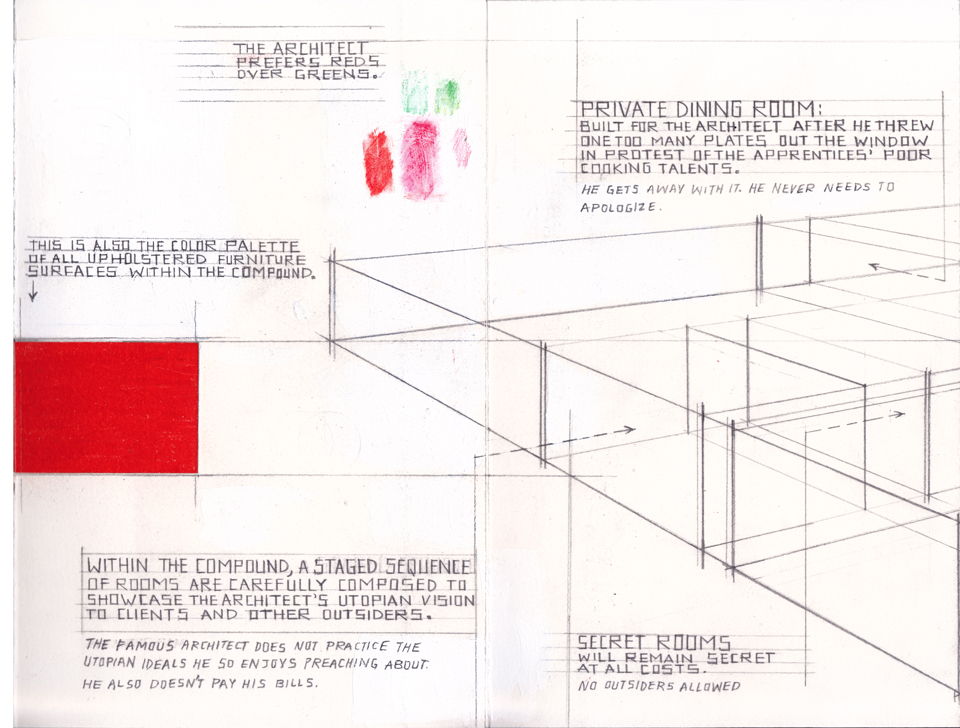
Deb Sokolow
detail
Inside the Famous Architect’s Compound
Artist book
graphite, acrylic, colored pencil, crayon,
and collage on acid-free paper, bookboard, PVA
9 x 6 inches folded
9 x 44 inches open
Edition of 3, 1 artist proof
2015
What’s up with the New Year? Do you have any specific projects in the works?
I’m continuing to work with the Famous Architect theme and also starting research on the presidential candidates for an exhibition scheduled to coincide with the presidential campaign next year.
For additional information on the work of Deb Sokolow, please visit:
Deb Sokolow – www.debsokolow.com
Western Exhibitions – www.westernexhibitions.com/sokolow/index.html
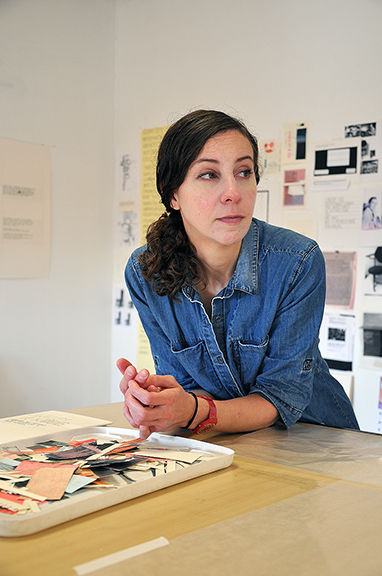
Deb Sokolow, artist, Chicago, 2015
Interview and portrait by Chester Alamo-Costello


